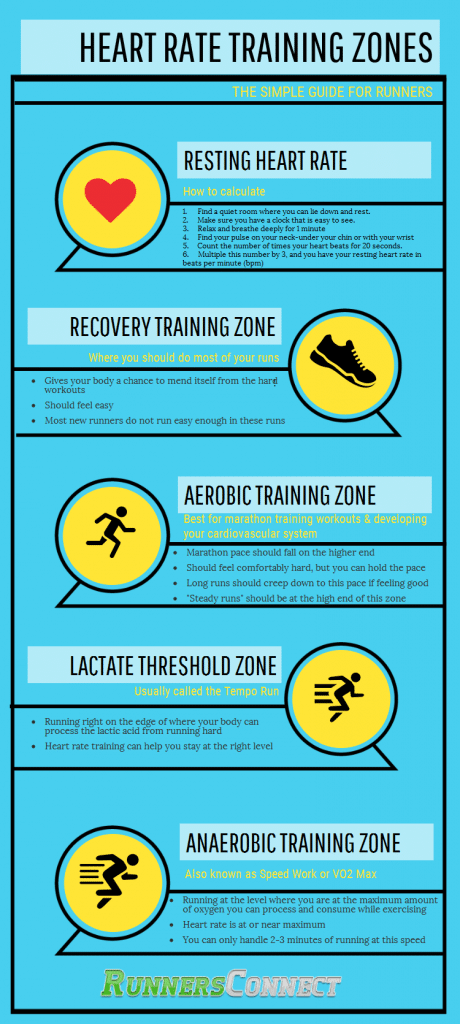Some people are perfect pacers.
Without a watch, they can sense, within a couple of seconds per mile, how fast they are going. For runners like this, workouts are a breeze. They rarely go out way too slow in a tempo run, or way too fast in a race.
But then, there’s everybody else.
If, like most runners, you are not blessed with the gift of “perfect pace,” you’ve probably had interval workouts with wildly off-target pacing or easy runs that ended up being way too fast to recover.
Or maybe you’re prone to racing yourself in workouts, always trying to beat your best times for your typical running routes, even when you’re not in peak shape.
Sound familiar?
Us too, and it’s tough to wrap your head around. Especially when those perfect pacers make it sound so easy! “Just listen to your body” and “start conservative” sound so simple, yet why are they so hard?
We are going to give you a different way to listen to your body. One with numbers and tracking; and we all know how much runners love their numbers. We will then share how to calculate your heart rate zones using a calculator, so you know how to implement these various levels of training intensity.
Then maybe, just maybe, the rest of us can learn to pace ourselves a little better.
How does using a heart rate monitor help me pace better?
One way to avoid these problems is to use a heart rate monitor. By giving yourself an objective measurement of your effort level, you have no excuses for running at the wrong intensity on your workouts or easy days.
Here’s the deal:
As the intensity of exercise increases, your heart rate will increase proportionally.
Further, this relationship is linear, at least at “submaximal” speeds that don’t elicit your maximum heart rate.
What does that mean?
If you run 25% faster, your heart rate will increase proportionally. This allows you to use a heart rate monitor to closely track your effort level when you run.
If, for example, you know that your easy runs are supposed to be at 65-79% of your maximum heart rate, checking a heart rate monitor can make sure you’re keeping the effort easy enough to recover.1 Some models will even alert you if you are outside of a predetermined zone.
How accurate is training by heart rate?
However, heart rate monitoring is not quite as precise as you might think.
The problem isn’t usually with the technology—commercial heart rate monitors generally work great. Rather, issues can arise from factors affecting your heart rate itself.
According to a 2003 review article by Juul Achten and Asker Jeukendrup at the University of Birmingham in the United Kingdom, your training status, the weather (especially humid or extreme cold), and altitude can all cause your heart rate to respond differently to the same exercise intensity.2
Some research has found that large blocks of training that border on “overreaching”—doing too much training and putting yourself at risk for frank overtraining—causes your heart rate to drop for a given intensity.
Most studies find that overreaching or overtraining results in a drop in maximum heart rate of about 6 beats per minute, so if you feel like you are working hard but your heart rate is not where it is supposed to be, you may be drifting into overtraining.
No one wants that. Overtraining is not just for elite runners, but many recreational runners fall into the trap, make sure you are not one of them.
How does weather affect heart rate?
Heat and cold also change the heart rate response to exercise. In hot conditions, your heart rate is increased at a given intensity. So, if your heart rate was 140 beats per minute while running eight minute mile pace in normal conditions, it might be 145 or 150 beats per minute when it’s hot out.
Dehydration often goes hand-in-hand with running in hot conditions; losing a lot of your body’s water reserves can cause your heart rate to increase by up to five percent for a given exercise intensity.
Training in the cold causes a different reaction. Your heart rate for a given intensity remains the same—140 beats per minute at eight minute mile pace, in our previous example—but your oxygen consumption increases.
This means your heart rate will underestimate how hard you are actually working. Achten and Jeukendrup hypothesize that this is caused by the changes in bloodflow that occur in cold weather: your body reduces heat loss by directing more blood to the veins deep inside your body, instead of the ones close to your skin.
If I am not overtrained, or training in extreme weather, is it accurate?
Even in ideal conditions, there are small day-to-day variations in your heart rate at a given intensity. Achten and Jeukendrup report that this variation can be between 2 and 4 beats per minute—hence the typical prescription of heart rate zones instead of exact percentages.
Additionally, if you travel to (or live at) elevations higher than about 3,000′ above sea level, you can expect to see significant changes in your heart rate during exercise.
Achten and Jeukendrup cite research showing that exercise at high altitude can result in a drop in heart rate at a given intensity of up to 22%!3
If you’re travelling to altitude, it’s probably best to ignore the heart rate monitor for the duration of the trip, trusting your internal perception of effort instead.
One final thing you should be aware of is a phenomenon called “cardiac drift”. We have covered this before, as most runners do not take this seriously as a reason their heart rate training may be inaccurate.
During long bouts of exercise at a constant intensity, particularly if you get dehydrated or are exercising in hot conditions, your heart rate can creep up over time.
So, if you’re running at 140 beats per minute on a gym treadmill set to 7.5 miles per hour, don’t be surprised if your heart rate starts to creep up after ten, twenty, or thirty minutes of running.
Some research indicates that the increase can be as much as fifteen percent! The cause of cardiac drift is not fully understood—staying hydrated and cool reduces the degree of drift, but does not totally eliminate it.
Is it worth using it to help with training?
With Bluetooth-enabled heart rate monitors that can interface with your smartphone or GPS watch, integrating heart rate monitoring into your training has never been easier.
If your running has been held back by your inability to control your effort level in training, or if you just need a gentle reminder to take it easy once in a while, using a heart rate monitor could be a big help.
Just keep in mind that a large number of factors can cause your heart rate to increase or decrease while running at the same intensity. As with all technological tools in training, heart rate monitoring should be used as a guide, not blindly followed as infallible law.
Calculating Training Zones for Heart Rate Training
Although we do not recommend training by heart rate for a lot of runners, it can be very helpful to those who really struggle to pace. If you do wish to use a heart rate monitor for your training, it is important to stay in the right zones, depending on what you are trying to get out of the workout.
Luckily, we have a heart rate training calculator for you to use to determine your individual zones.
But first, let’s break down the zones, and when you should use them:
Now, hopefully the zones make a little more sense, and you can now download our heart rate zone calculator to figure out your zones, and make sure you stay in them!
RunnersConnect Bonus
Download our Heart Rate Calculator to find out what your individual heart rate zones are.







4 Responses
Great advice. I’ve used a HR monitor in the past to run at appropriate easy paces. Now I’ve moved more towards running by perceived effort, but the HR monitor still has its uses!
Thanks for sharing Kyle, once you learn to listen to your body, that is the way to go! Congrats on learning to listen….it is a skill 😉
I experienced that (blindly) relying on a HRM for training pace might even lead to injury.
When I (re-)started running about 1 and 1/2 years ago, I thought I’d better get a HRM, just to be sure not do drop dead from heartstroke (I am 58, f). I then found out about and trained in the “right” zones for the different kinds of workouts (taking into account my age, resting heart rate etc).
The problem I ran into was that these heartrates might be appropriate for my heart – but way too fast for the rest of my (still untrained) body. And rarely a heart and a lung have been seen running by themselves on the road ;-).
As a matter of fact, there is almost a difference of 1 minute/km between my easy-run-pace according to heartrate – about 6’/km for 125 BPM – and what your pace calculator is recommending for my easy runs – about 7’/km for 25’/5k. (I must admit I have never actually raced, but I once tried to run 5k as fast as I can).
I suppose that running my easy runs too fast due to my HRM might be the reason why my Achilles was flairing up so often – preventing me to do any serious speed work.
So, do not rely blindly on your HRM!
to Mat
If you have not raced or have only one race, it is very likely that any calculator will not provide the accurate running pace. On the other hand the maximum heart rate can be miscalculated using only age formula. It would lead to the wrong heart rate for easy running and any other run. Best way is to test your max heart rate.
You should be familiar with the technology to benefit from it. This article give you a little insight.